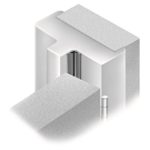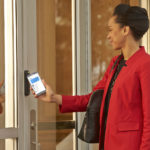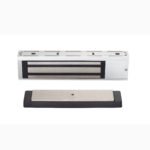 Electrified hardware can be particularly hard – especially when it comes to codes. To try to reduce the confusion that may result in inconsistent interpretations, I have created a new page called Special Locking Arrangements. It’s available on the Topics menu^, so you can refer to it when you need it.
Electrified hardware can be particularly hard – especially when it comes to codes. To try to reduce the confusion that may result in inconsistent interpretations, I have created a new page called Special Locking Arrangements. It’s available on the Topics menu^, so you can refer to it when you need it.
This page reiterates the fact that not every electrified hardware application is a special locking arrangement – the most common type of access control door is a “normal locking arrangement” which allows free egress via the mechanical operation of the door hardware. Currently there is no section in the model codes that address this electrified hardware application, although we will see a change in 2024.
Although at first glance the page looks like A LOT of information (TMI, perhaps), it is intended to be used like one of the most popular posts on iDigHardware – the one about smoke door requirements. Rather than reading start to finish and attempting to absorb every fact, read through the questions and see if each one describes the type of system you are working with. If not, move on to the next question.
As a preview of the new page, here are the questions:
- Type 1) Does the electrified hardware delay egress for 15 seconds (or 30 seconds) to deter unauthorized use of the door?
- Type 2) Is the electrified hardware used to control egress indefinitely in a memory care facility or other health care unit where patients require containment for their security or safety?
- Type 3) Is the lock an electromagnetic lock released by a sensor above the door?
- Type 4) Is the lock an electromagnetic lock released by a switch in the door-mounted hardware?
- Type 5) Does the door serve an elevator lobby that does not have direct access to an exit stairwell?
- Type 6) Is the door an interior fire door assembly leading to a stairwell, where the lever handle on the stair side of the door is typically locked?
- Type 7) Is there an access control reader on the outside, that controls access while the door hardware provides free egress at all times?
I hope this new page will help when a question arises about the codes that apply to electrified hardware. Along with the links throughout the page, there are additional resources at the end. I would love to hear any suggestions you may have to improve the page, to help ensure that it addresses as many questions as possible.
You need to login or register to bookmark/favorite this content.









Thank you very much for this–this detailed breakdown is fantastically helpful. Much appreciated!